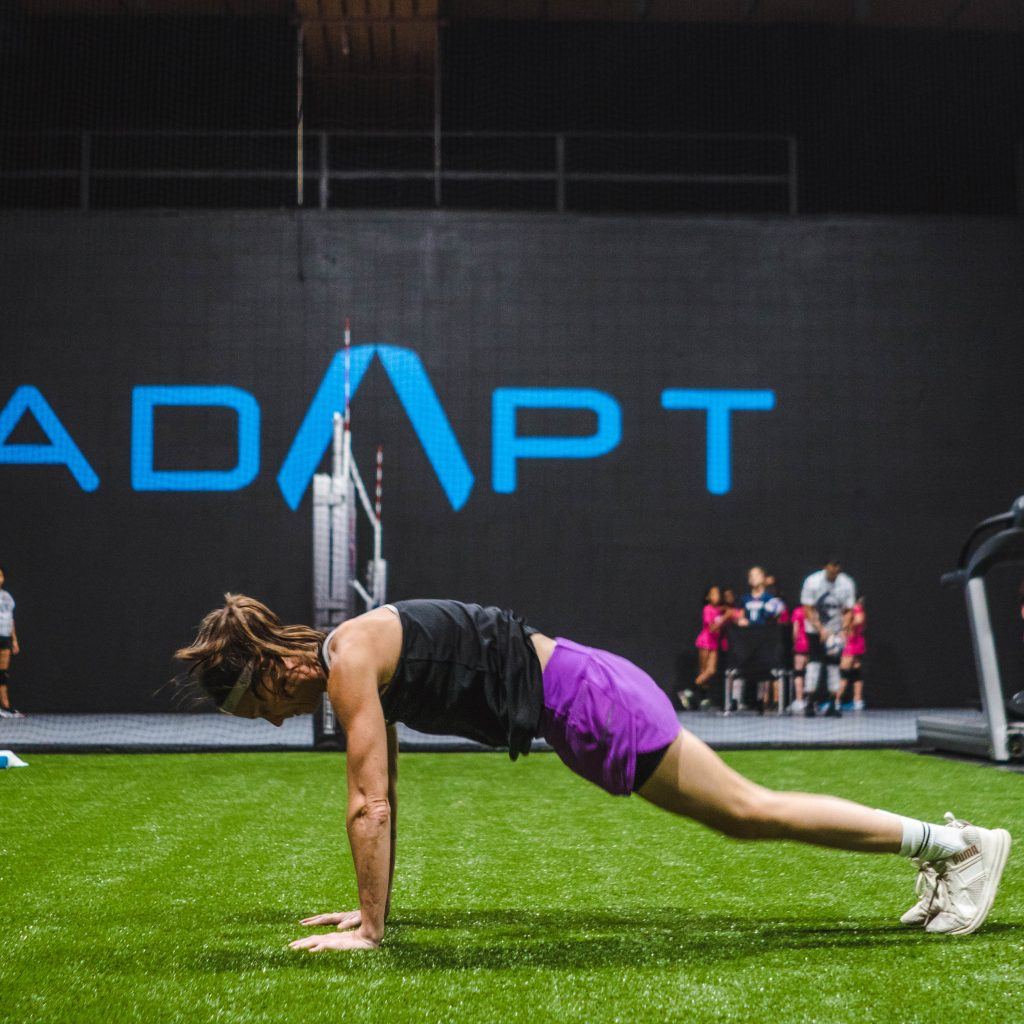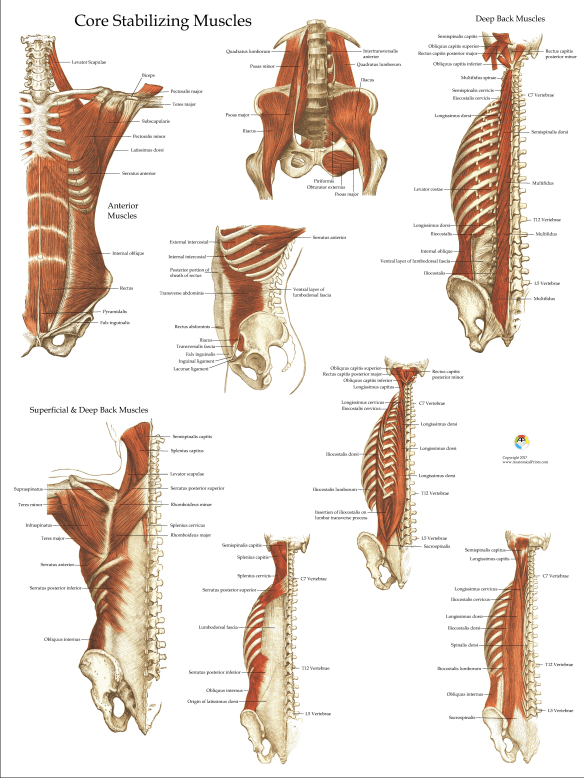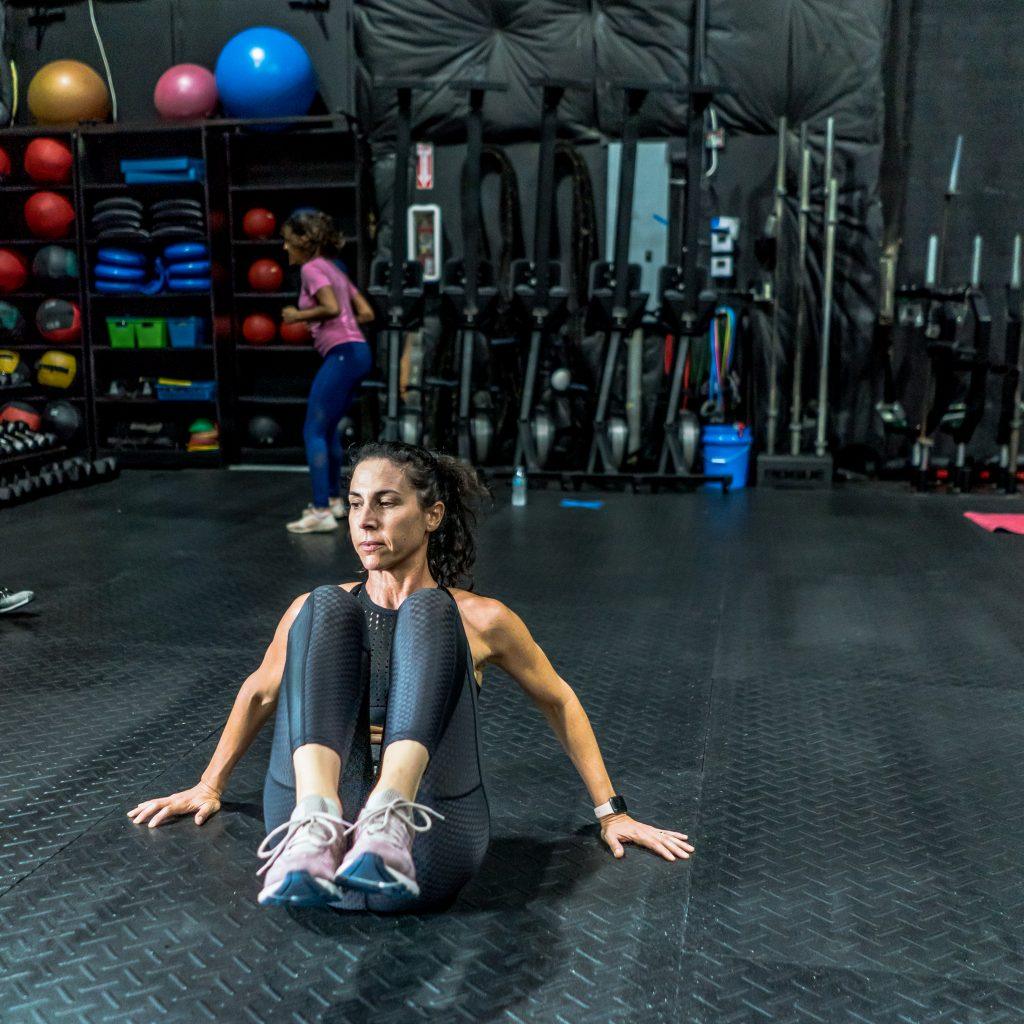
The Core… 3 Simple Things We May Have Overlooked

1. Breathing
We cannot discuss the core without discussing breathing, as breathing is essential for life. As we breathe correctly, we can mitigate stress, strengthen our core, develop more muscle tone, and become more resilient to low back pain. We are one big chain linking the core with our breath, our breath to our alignment, and our alignment with function. Our torso resembles a cylinder- with the respiratory muscles at the top and the pelvic floor at the bottom. The diaphragm and core muscles need to work synergistically for proper breathing to occur. Inhale slow and steady, deep into the diaphragm so the belly expands outward like a balloon filling with air then, exhale, engaging the core as if you were trying to blow up a balloon. What is your core? Did you feel it working?
2. Anatomy
TRUE or FALSE?
Our core muscles are only located on the front side of our body?
FALSE! DID YOU KNOW…
Our core consists of all the muscles surrounding our midsection, to brace our spine. The abdominal muscles were designed to function as stabilizers, not movers. These muscles primarily include:


- Rectus Abdominis “6-pack”
- Internal and External Obliques
- Transverse Abdominis
- Quadratus Lumborum
- Multifidus Muscles
- Erector Spinae Group
- Glutes – Max., Med., Min.
- Psoas/Iliacus
So you may be asking, what does it mean to stabilize your core? Pretend Mike Tyson is about to punch you in the stomach… Exhale and Brace!! Having a strong core is essential to maintain good posture, endurance, injury prevention, and may help reduce low back pain.
Now that we’ve discussed what it is and where it is, here’s a simple exercise to try.


3. Crunches VS Modified Curls-Up Exercises
Have you ever performed traditional abdominal crunches and found yourself feeling like your neck and hips had a harder workout than your core? Well, there’s an alternative exercise with MORE benefits for you to try. The modified curl-up is one of the McGill Big 3 exercises which not only helps to create abs of steel, mitigates that strained neck, but it ALSO assists individuals with low back pain. We want to create spinal “stiffness” and be able to use our core as a brace so we can move more efficiently and with less pain. Remember, our hips should be moving, not our lower back. You can’t have distal mobility without proximal stability.
The curl-up is performed by laying on the ground, with the neck slightly lifted, hands braced under the low back, and one knee is bent. You may increase the challenge by either lifting the elbows off the ground or slightly elevating the leg. This is held (isometrics) for approximately 8-10 seconds and repeated about 3-5x. Isometric contractions have been shown to enhance muscular endurance and coordination. Not only does this particular exercise function to create a resilient core, but it is also more comfortable to perform.
To see the video, check out our IG page @chainworkphysio or click here
The team here at Chainwork Physio is here for any questions you may have. Please feel free to contact us as we are here to help!
